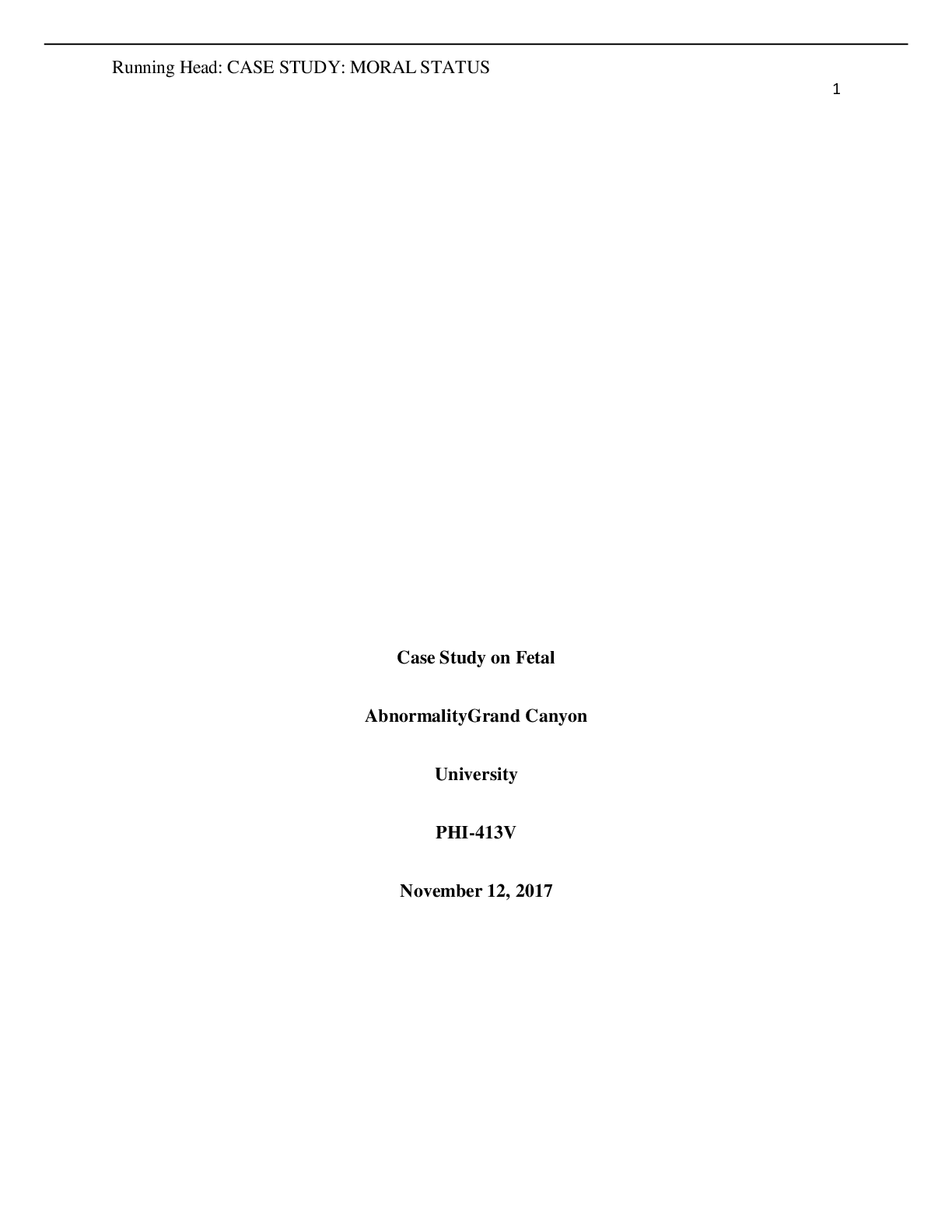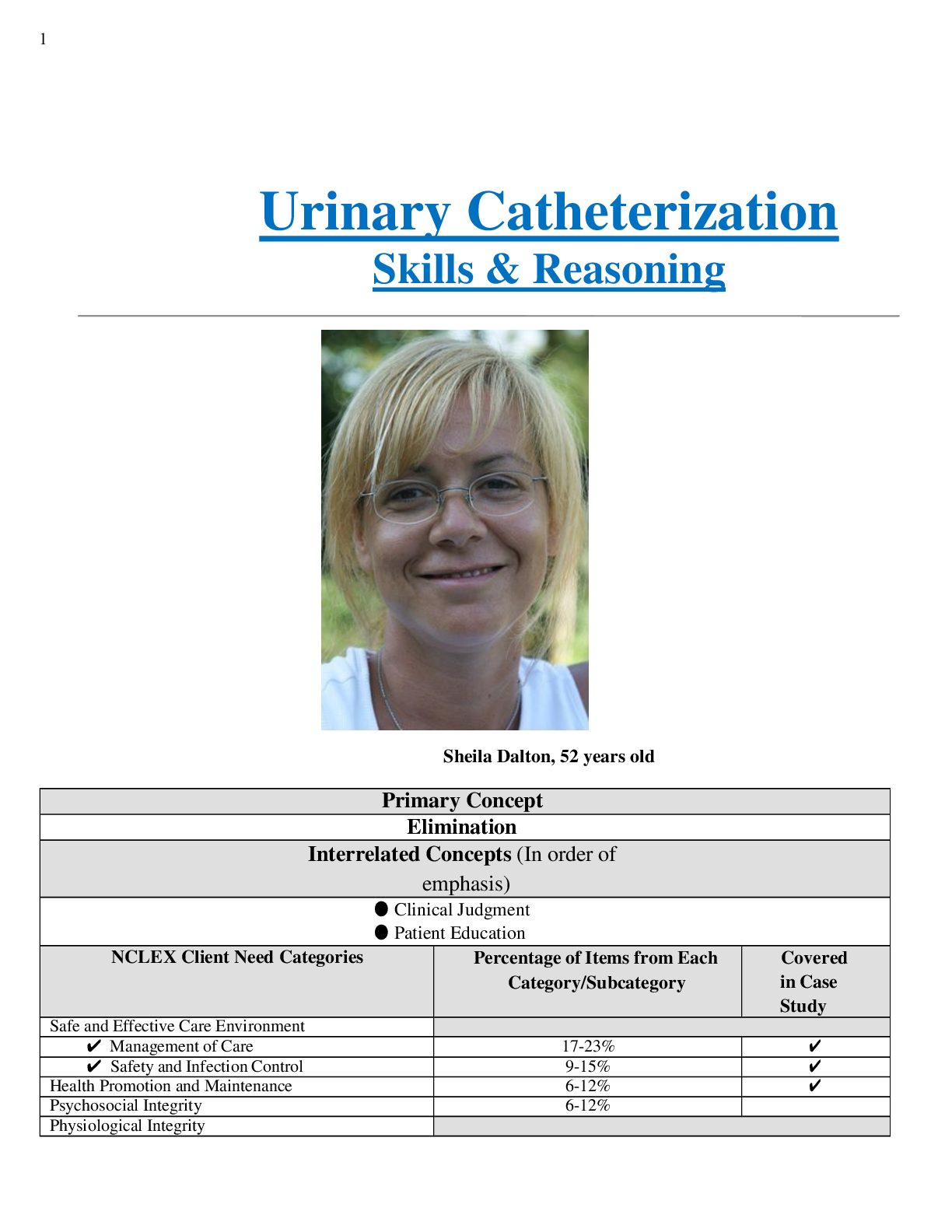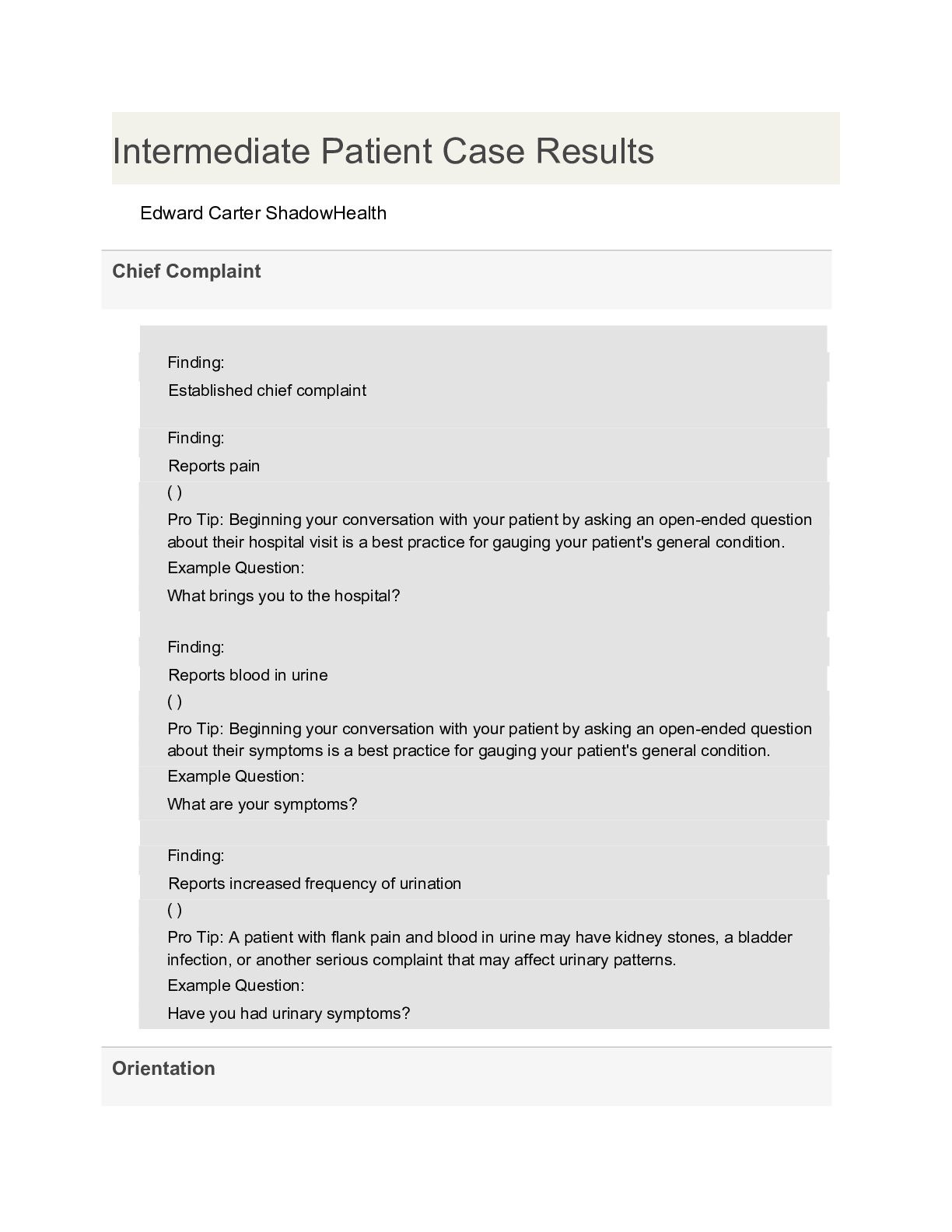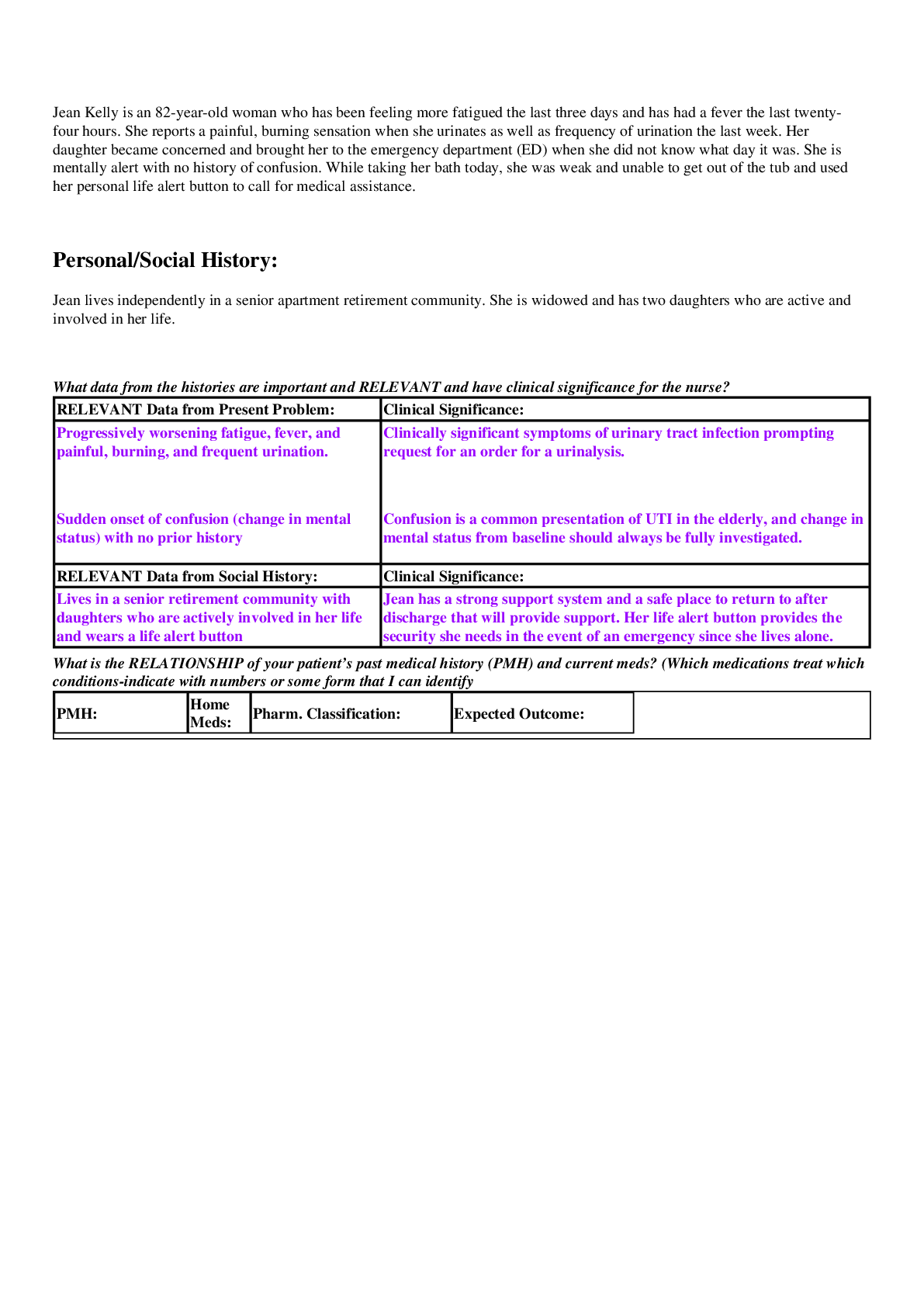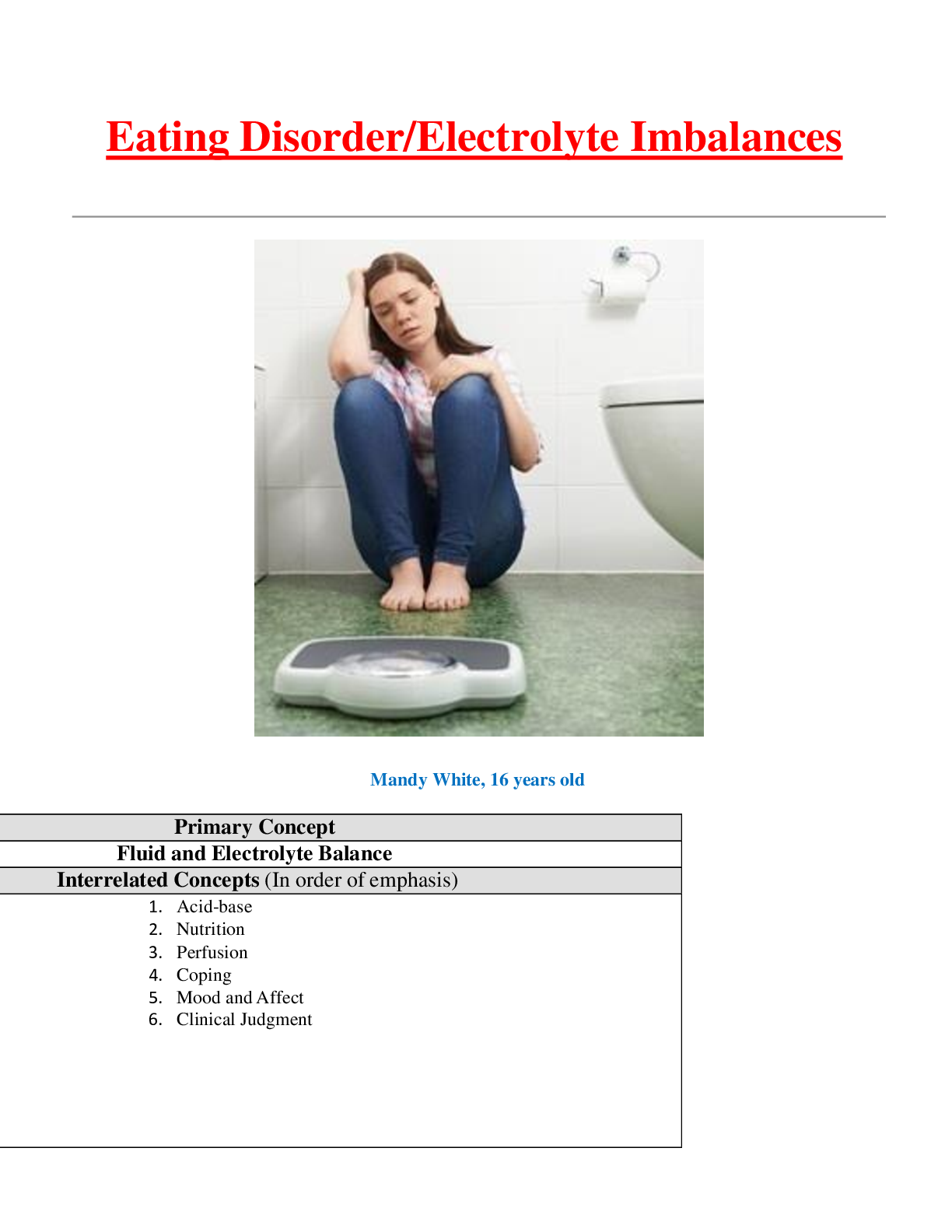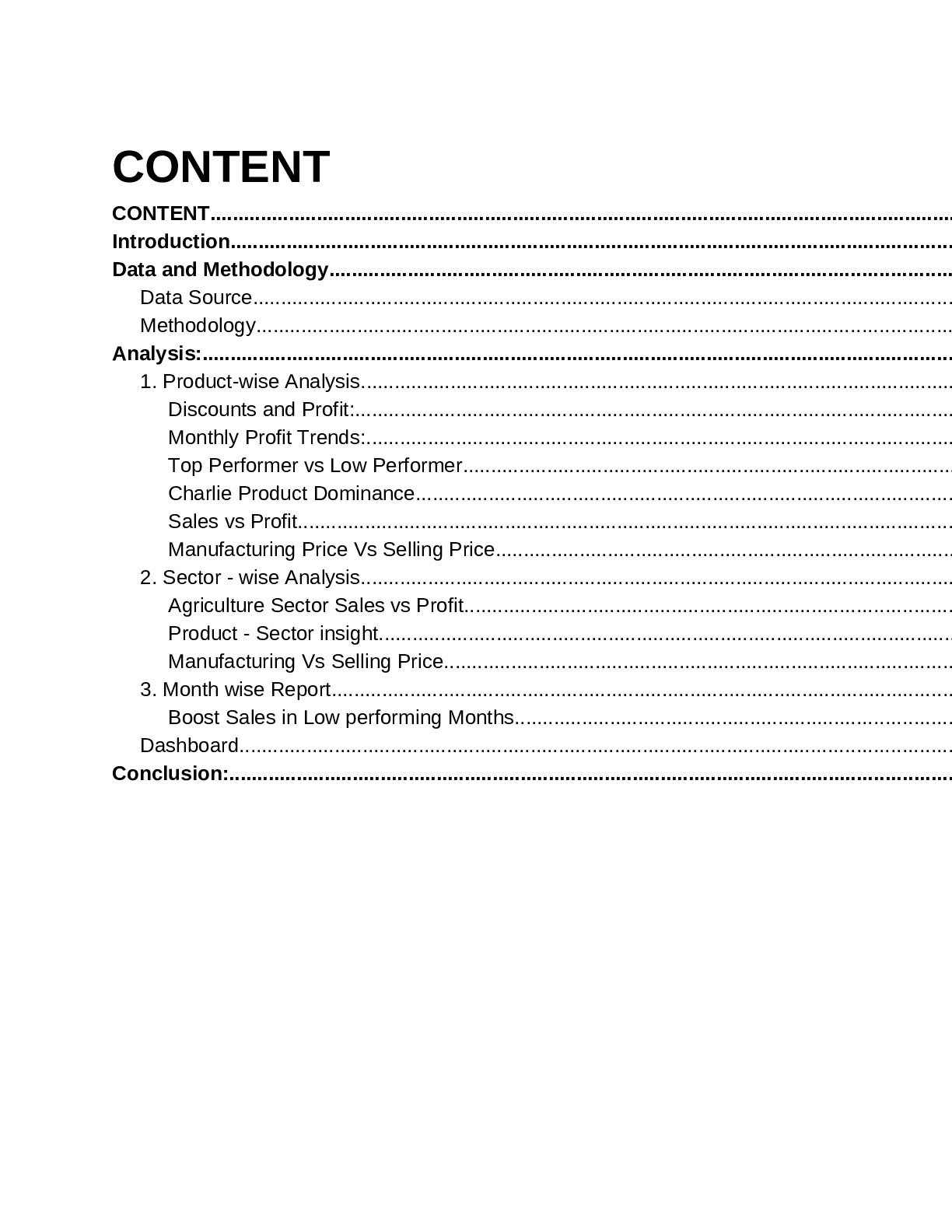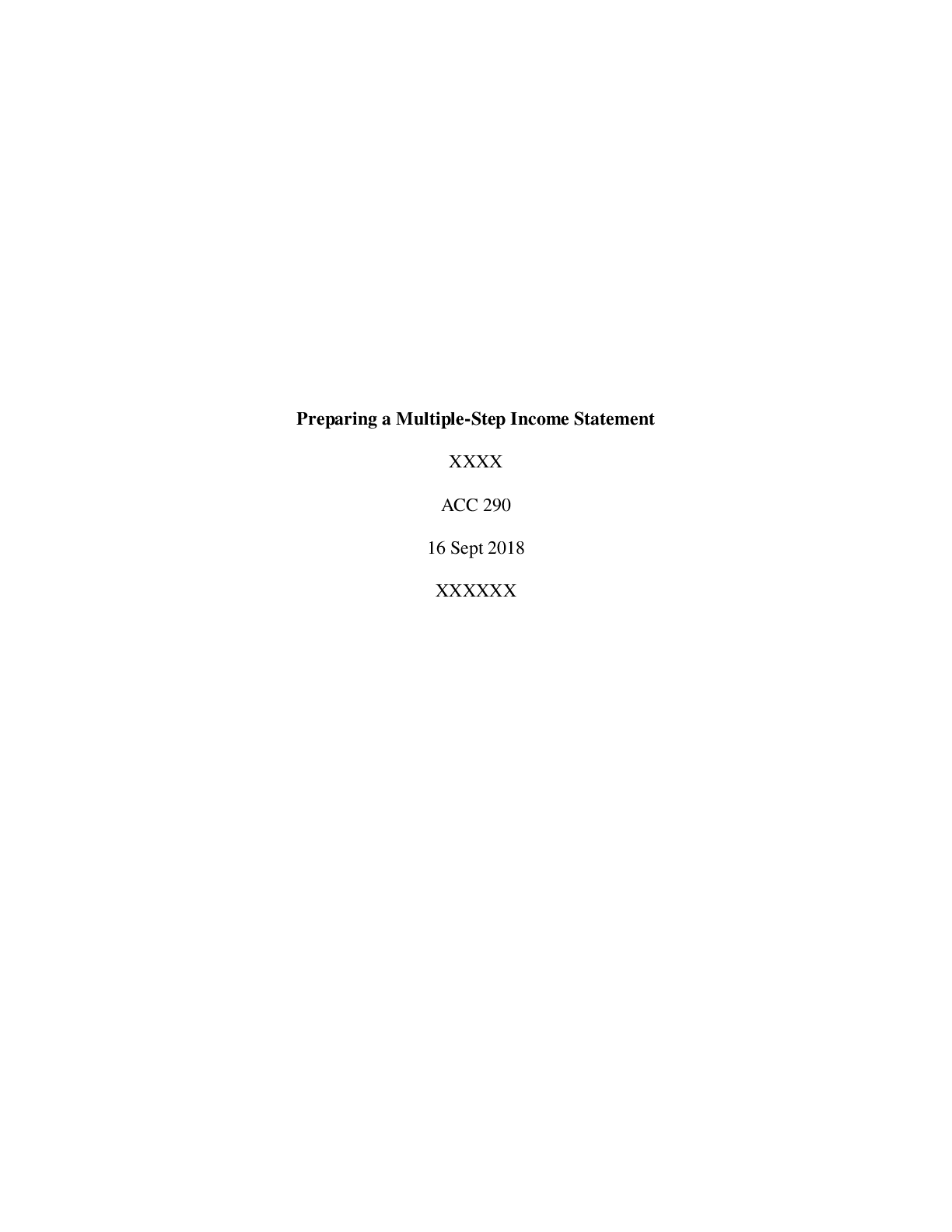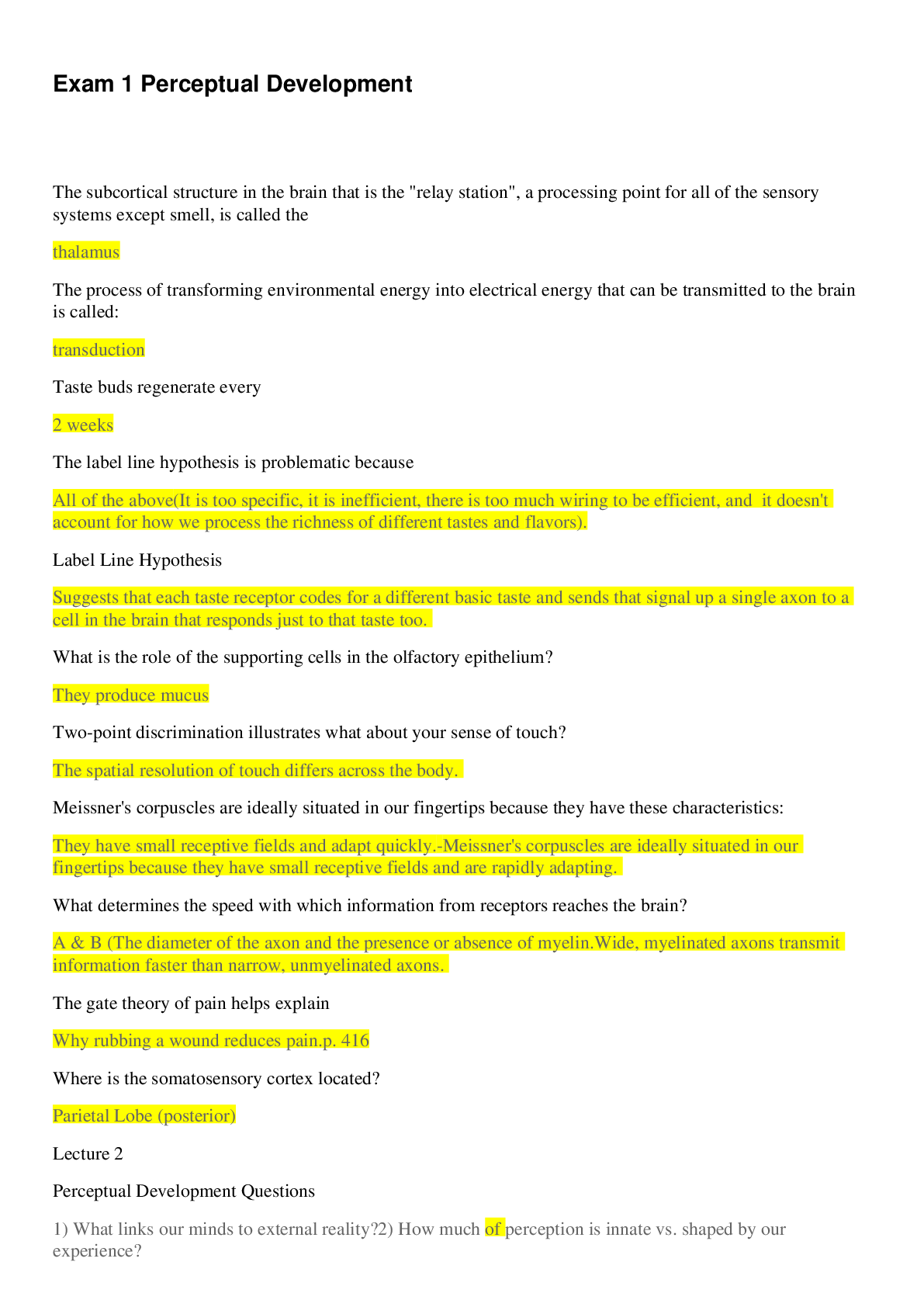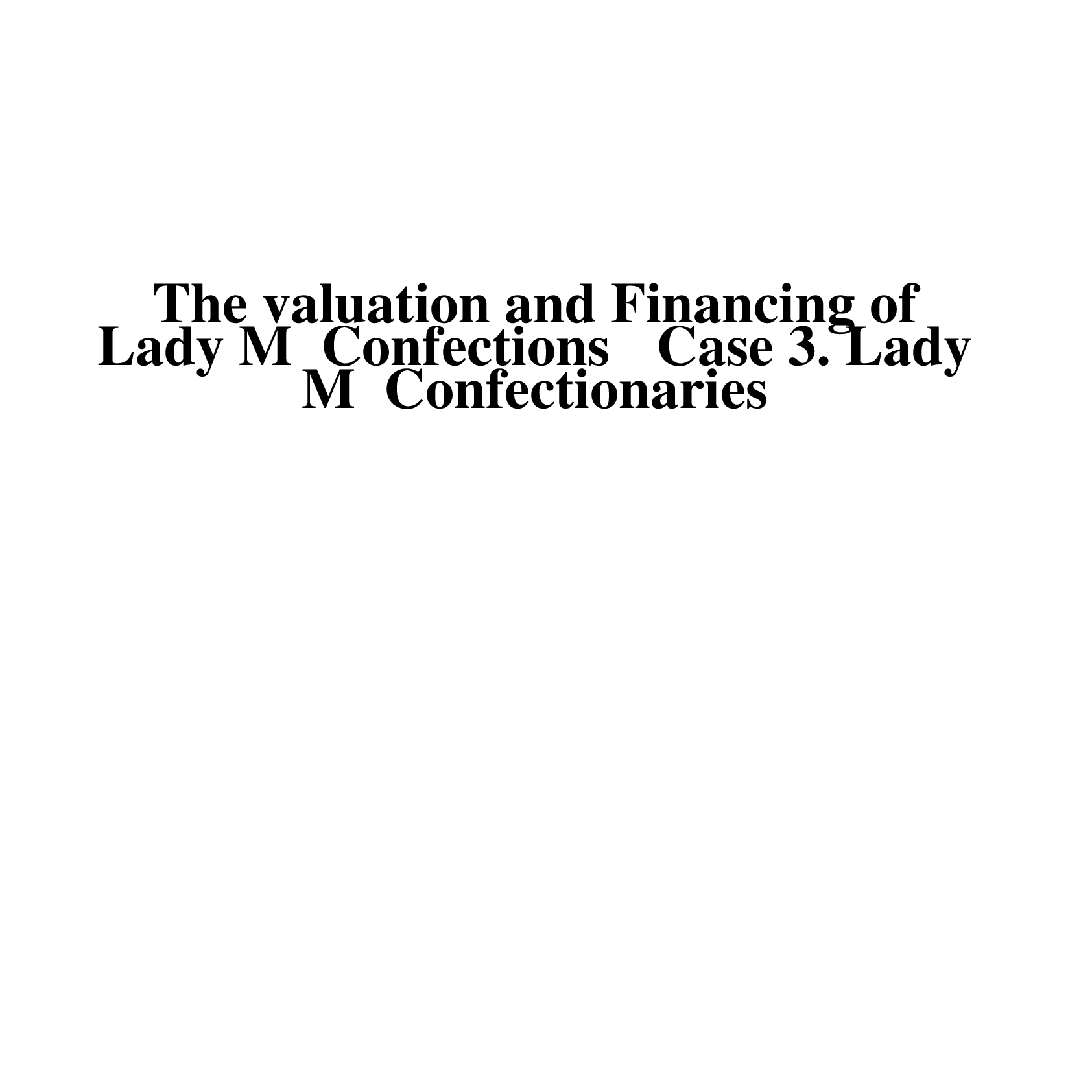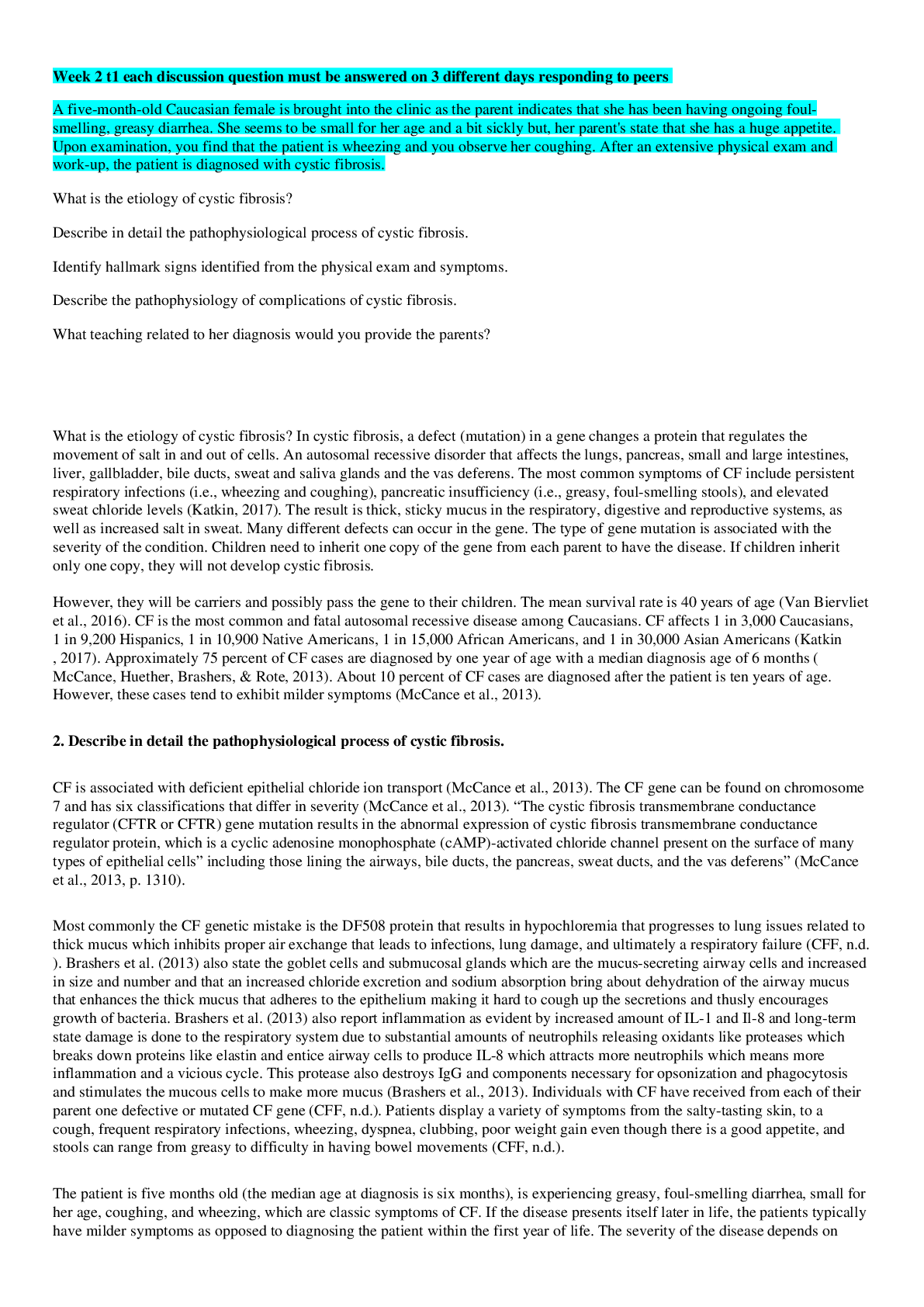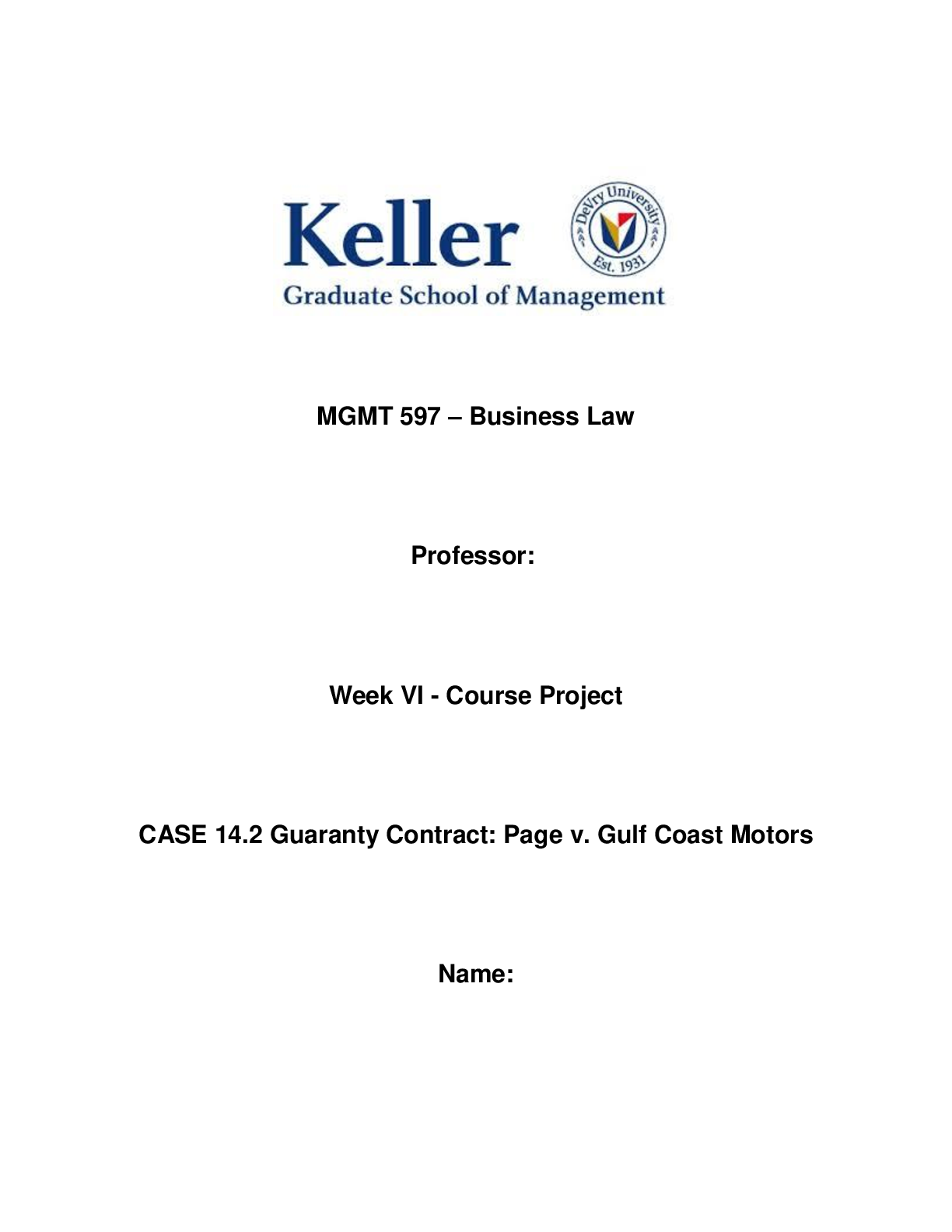*NURSING > CASE STUDY > Cardiovascular Final Case Study (All)
Cardiovascular Final Case Study
Document Content and Description Below
Cardiovascular Final Case Study Valencia Howard South University Advanced Nursing Practice 1 Dr. Karen Hartman October 17, 2015 Cardiovascular Final Case Study The heart is one of the mos... t powerful organ within the body and is responsible for a large population percentage of heart disease worldwide. The most common type of heart disease is the coronary artery disease (CAD) (ICD-10-CM code I25.10), ("ICD10 Data," 2015) which affects the blood flow to the heart. (CDC, 2015, para. 1). “For some people, the first sign of CAD is a heart attack, in which their health care team can be able to help one’s reduce their risk for CAD” (CDC, 2015). The cardiovascular system was chosen as a favorite out of the pulmonary, gastrointestinal, genitourinary, or musculoskeletal systems because of a special interest of the flow of blood through the heart. The cardiac cycle knowledge is imperative in order for the advanced nurse to effectively care for the patient. This plan of care is based on analytical assessment, published ground rules, standards set for individualized specialties, and other studies depending of evidence-based literature for a 52-year old male from an Irish decent. Analyzation of Cardiovascular System CAD is initialized by causing a formation of plaque, which are also called aretheromas, in the lining of the artery. (Mandal, 2014). The formation of plaque thickens in the arterial wall causing a narrowed arterial space. The blood has to move through this narrowed area to reach the heart. This blood reaches the heart supplying oxygen and nutrients to the heart muscle. This reduction of blood flow causes atheromas. (Mandal, 2014). “The formation of plaque in the artery is called atherosclerosis and the plaque is called an atheroma” (Mandal, 2014, para. 2). The presence of plaques in the narrowed arteries may lead to angina or chest pain because the heart muscles have a deprivation of oxygen. (Mandal, 2014). As the plaque increases within the arterial wall, the vessels become more narrowed leading to a possible heart attack. Symptoms that may occur as the arteries narrow are chest pain brought on by physical activity, emotionally upset, or just maybe from eating a meal. (Mandal, 2014, para. 3). Sometimes there may be a blockage in the artery that may not produce any symptoms unless the plaques developed in severe. Other signs and symptoms include dyspnea or intense fatigue on exertion causing the heart to not pump enough blood to meet the body’s needs. ("CAD ........................................................CONTINUED........................................... [Show More]
Last updated: 2 years ago
Preview 1 out of 13 pages
.png)
Buy this document to get the full access instantly
Instant Download Access after purchase
Buy NowInstant download
We Accept:

Reviews( 0 )
$10.00
Can't find what you want? Try our AI powered Search
Document information
Connected school, study & course
About the document
Uploaded On
Mar 20, 2021
Number of pages
13
Written in
Additional information
This document has been written for:
Uploaded
Mar 20, 2021
Downloads
0
Views
71



